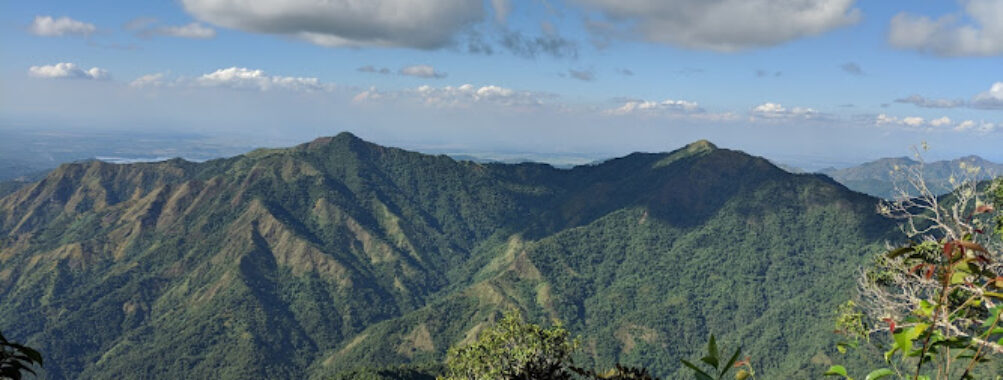
Turquino National Park
Table of Contents
Description
Turquino National Park is the kind of place that makes you feel small—in the best way possible. Stretching across the rugged Sierra Maestra mountains in eastern Cuba, it’s a wild tangle of steep ridges, deep ravines, and thick tropical forests that hum with life. Here, you’ll find rare birds darting between the trees, orchids clinging to mossy branches, and, if you’re lucky, the occasional hut where locals still brew coffee the old-fashioned way. It’s also steeped in history; hidden among these slopes is the former headquarters of Fidel Castro during the Cuban Revolution, which adds a layer of intrigue for those who like their hikes with a side of storytelling.
It’s not a manicured, easy-going park. The trails can be muddy, the climbs steep, and the weather—well, it can flip from sunny to torrential rain in minutes. But that’s part of the charm. The air feels fresher here, the views more hard-earned. And when you finally stand at the summit of Pico Turquino, Cuba’s highest point at 1,974 meters, you’ll understand why people keep coming back despite the sweat and sore calves. It’s a place that rewards patience, persistence, and a willingness to get a little uncomfortable for the sake of adventure.
Families do visit, and kids with a love for the outdoors will find plenty to marvel at, though the longer treks might be better suited for older children or those used to hiking. There’s a raw honesty to the park—no over-the-top tourist gloss, just nature doing its thing and letting you be a part of it for a while. It’s the kind of destination that leaves you with stories you’ll be telling for years.
Key Features
- Pico Turquino – Cuba’s highest mountain, offering panoramic views of the Caribbean Sea and surrounding peaks
- Lush tropical forests filled with endemic plants and rare bird species
- Historic revolutionary sites, including Fidel Castro’s former headquarters
- Challenging hiking trails ranging from half-day walks to multi-day treks
- Deep ravines and dramatic mountain ridges for striking photography
- Opportunities to see traditional coffee plantations in the surrounding area
- Cooler mountain climate compared to the coastal lowlands
Best Time to Visit
If you want to make the most of your trip, aim for the dry season, which typically runs from November to April. The skies are clearer, the trails less slippery, and the humidity a bit more forgiving. That said, this is the mountains—weather has its own agenda. Even in the dry season, you might get a surprise shower, so a light rain jacket is your best friend. I once hiked up in January thinking I’d get nothing but sunshine, only to be caught in a mist so thick I could barely see my boots. But honestly, it added to the atmosphere.
The wet season (May to October) brings heavier rains and more challenging trail conditions, but it also means the forest is at its most lush and alive. Waterfalls run stronger, and the air smells like fresh earth. If you don’t mind getting wet and muddy, it can be a rewarding time to visit—just be prepared for slower progress and fewer clear views from the summit.
How to Get There
Most travelers start their journey from Santiago de Cuba or Bayamo, both of which have decent road connections to the park’s entry points. From there, you’ll typically head toward Santo Domingo or La Plata, which act as gateways for the main hiking routes. Public transport options are limited and not always reliable, so arranging a private taxi or joining a guided tour is the easiest route—especially if you’re carrying gear.
Reaching the trailheads often involves winding mountain roads that can be bumpy and narrow. If you get carsick, maybe skip the big breakfast. And don’t expect constant cell service once you’re in the mountains; part of the appeal here is disconnecting. For the Pico Turquino climb, most people hire local guides—not just because it’s required for certain routes, but because they know the terrain, the history, and the little details you’d miss otherwise.
Tips for Visiting
First off, don’t underestimate the trek. Even if you’re in decent shape, the combination of steep inclines, humidity, and unpredictable weather can make it tougher than it looks on paper. Wear sturdy hiking boots with good grip—trust me, sneakers won’t cut it when you’re sliding down a muddy slope. And pack more water than you think you’ll need; the mountain air can be deceivingly drying.
Bring layers. Mornings can be cool, midday can be hot, and evenings can drop back down again. A small first-aid kit is smart, too—blisters and insect bites are common. If you’re planning to camp or do a multi-day trek, double-check your gear before you set off; replacing something in the middle of the Sierra Maestra isn’t exactly easy.
One more thing: take your time. I’ve seen people rush to the summit just to tick it off their list, but the magic here is in the details—the way the light filters through the canopy, the sound of distant rivers, the stories your guide shares about the revolution. Stop, breathe, and look around. That’s when Turquino really gets under your skin.
Location
Places to Stay Near Turquino National Park
Find and Book a Tour
Explore More Travel Guides
No reviews found! Be the first to review!